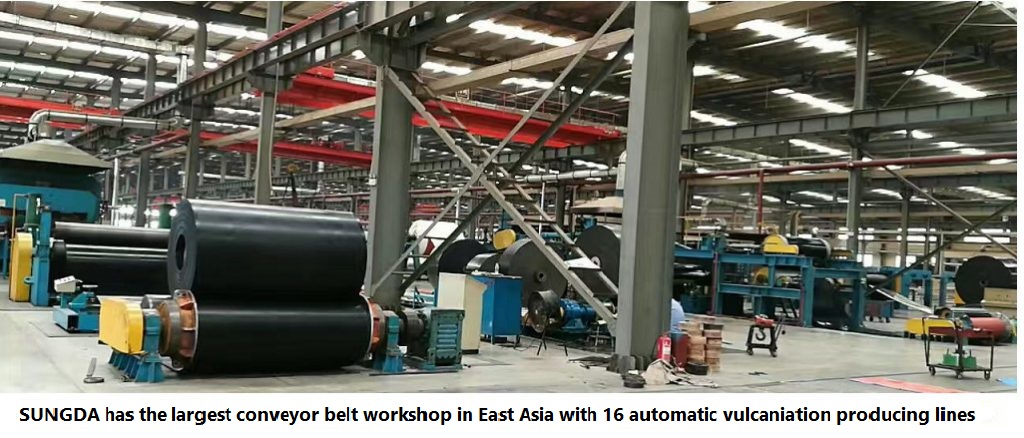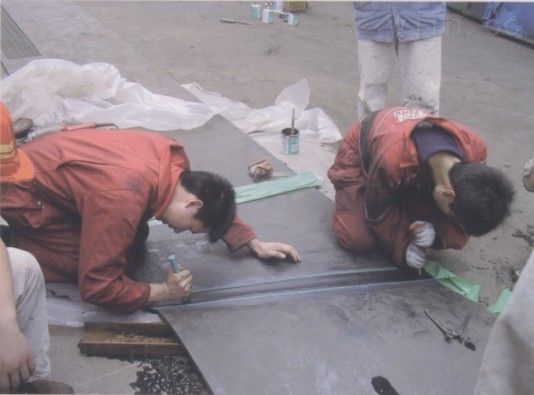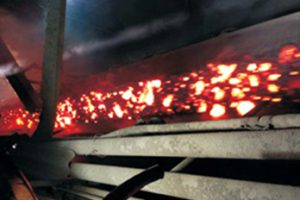Ways to prevent off tracking of the integral carcass flame resistant conveyor belt
In coal mine production, integral flame-resistant conveyors are widely used to transport coal and materials. Conveyor conveying has the characteristics of continuous, high-efficiency, large-angle conveying, safe operation, convenient use, convenient maintenance, low conveying cost, shorter conveying distance, and lower energy consumption. During operation, the phenomenon that the long axis of the conveyor belt exceeds 10 cm from the center line of the conveyor belt is called snaking. Snaking is the most common problem in the use of integral flame-resistant conveyors. It is the main reason for the partial or full-line spreading of the conveyor and the wear and tear of the edges of the conveyor. Snaking of the conveyor belt not only affects production safety, but also shortens life. Since the price of the conveyor belt accounts for 30% to 50% of the overall conveyor system, preventing the initial snake movement of the conveyor belt is essential to ensure normal production and reduce production costs. There are many reasons for the conveyor belt to snake, and there is a certain pattern of snakes. For example, the meandering of the conveyor belt at the same position and the meandering toward one side of the conveyor belt are usually caused by errors in the installation and adjustment of the conveyor belt on site. Several kinds of irregular snaking, such as the conveyor belt bends into an “s” shape, partially protruded and bent, etc., usually the conveyor belt itself has problems. This work analyzes the causes of snake movement of advanced conveyors from the perspective of production, and proposes corresponding solutions.
Snake caused by carcass material
(1) Reason analysis the carcass of the overall conveyor belt is mainly composed of polyester industrial yarn, and the dry heat shrinkage rate of different batches of polyester industrial yarn has certain differences. If the polyester industrial yarn with a large difference in dry heat shrinkage is not uniformly distributed during use, the shrinkage on both sides of the carcass will easily become uneven, and the elongation and tensile strength on both sides of the carcass will be different.
(2) Solution to the same batch to ensure that the next polyester industrial yarn is used in the same braiding machine. When replacing the next batch of polyester industrial yarn, replace it with evenly distributed wiring to prevent centralized yarn replacement. In the case of direct expansion of the belt carcass, the method of simultaneous expansion on both sides and the original polyester industrial yarn for the belt carcass is adopted.
Snake caused by bad carcass joint
(1) Reason analysis During production in a plastic chemical plant, if carcass of different widths are connected, the weft at the carcass joint part is easy to bend, and the center line of the carcass connection is offset. The bending degree on both sides of the carcass is inconsistent. Elongation and tensile strength are inconsistent.
(2) Solution: When belt carcass of different widths are connected, use a belt carcass with a width of 2~3m in the middle or complete a conveyor belt (complete the conveyor belt to be plastically formed, with certain dimensional stability, and better transition effect). Transition, eliminating the bending problem of the weft, so that the two-carcass become the same centerline.
The belt is not bent in the middle during production
(1) Reason analysis During the production process, the belt body must undergo 3 to 4 stages of plasticization, and each stage of plasticization must pass through the upper and lower guide rollers once. When passing the guide roller, if a off tracking occurs on the belt body, the tensile force applied to both sides of the belt body becomes uneven, and the stretch rate and tensile strength on both sides of the belt body become uneven. In addition, when the belt is in the center during the vulcanization process, the product conveyor belt will meander forward.
(2) The solution is aimed at the phenomenon that the belt body is not in the center during the plasticization process. Mark the center line on each roller, strengthen the operation process management of adding an anti-snake device, and adjust the maximum eccentricity of the original belt carcass from 10cm to 3cm. In order to improve the center of the belt during the vulcanization process, the bandwidth reference is corrected, the bandwidth is appropriately increased, and the off tracking of the belt in the flat plate of the vulcanizer is reduced. At the same time, an anti-snake device is installed on the vulcanization production line, with the belt body as the center operation.
Snaking caused by poor groove formation of the conveyor belt
(1) Cause analysis Practical observations show that the hunting phenomenon of low-level conveyors is significantly less than that of high-level conveyors, which is related to the good groove formation of low-level conveyors. The groove formation is good, the conveyor belt can walk close to the support roller of the conveyor, and the contact area with the support roller is large, and it is difficult to snake. Due to its thick belt body, the high-grade conveyor belt has high hardness and poor groove formation, making it easy to snake.
(2) Adjust the solution formula, reduce the hardness of PVC carcass material and target rubber, improve flexibility, reduce carcass thickness, and increase carcass elongation during vulcanization.
The above analysis of the reasons for the off tracking of the high-grade conveyor, and the corresponding measures taken will significantly reduce the problem of the off tracking of the conveyor and shorten the on-site debugging cycle. The edge wear caused by the snake of the conveyor belt is also significantly reduced, and the life of the conveyor belt is improved.

Tags: Flame resistant conveyor belt






